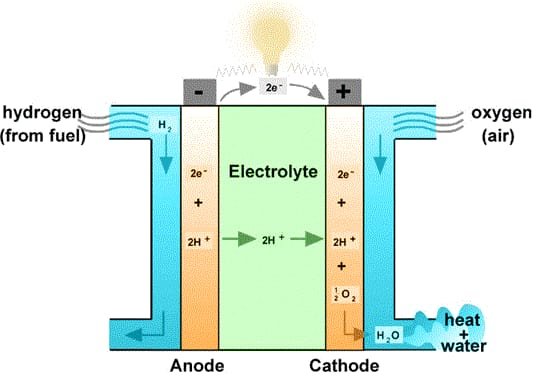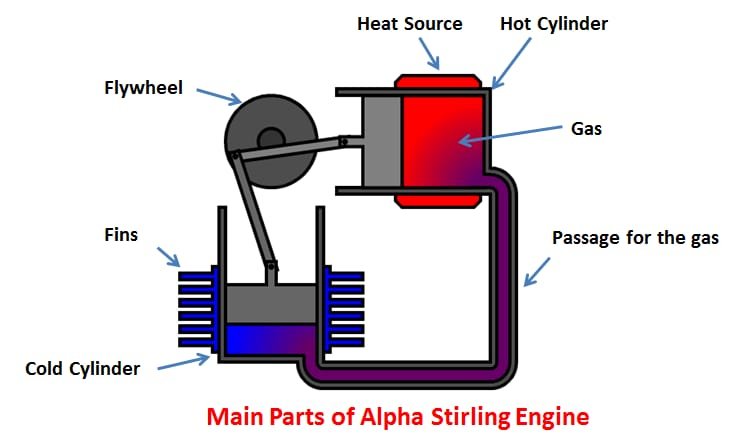Air Independent Propulsion(AIP): Advancing Submarine Technology- In the Vast expanse of the oceans, submarines play a critical role in military operations and scientific research. The Stealth and Versatility of these underwater vessels are unmatched and unparalleled, making them indispensable assets for the navies worldwide.
One of the most significant technological advancements in submarines is Air Independent Propulsion (AIP) system. This marine propulsion technology allows nuclear submarines to operate with access to oxygen which has revitalized underwater endurance, range, and stealth capabilities.
In this blog post, we will delve into the concept, benefits, and applications of the Air Independent System, and its impact on modern submarines operations.
Understanding Air Independent Propulsion System (AIP)
The Air Independent Propulsion System is an innovative idea and technology which has overcome certain limitations addressed with the conventional Diesel-electric submarines- conventional diesel-engine submarines had to surface frequently to recharge their batteries and intake fresh air for the engines. AIP system provides an alternative method of generating power for propulsion that allows the submarine to remain submerged for extended periods without the need to surface.
There are several types of AIP systems, each utilizing distinct power sources:
- Fuel Cells: Fuel cell is one of the most common types of technology that uses Hydrogen Fuel Cells to generate electricity. Fuel cells combine to produce hydrogen, oxygen, and heat. The produced hydrogen is then used to produce energy without surfacing. Hydrogen provides an energy source, enabling submarines to operate quietly and with minimal emissions.

- Stirling Engines: Stirling Combustion engines are external combustion engines in which the fuel is burned outside the energy is derived through sealed inert working fluid, usually either helium or hydrogen, which moves between a hot chamber and a cold chamber. The heat needed for the process can be generated by burning the diesel fuel or through the exhaust heat from the submarines’ main engines.

- Closed-Cycle Diesel Engine: Closed-Cycle Diesel Engine is the AIP system in which the engine exhaust is contained and carbon dioxide and other gases are removed. This system allows the submarines to remain functional even when they are submerged, providing the necessary power for the propulsion.

Advantages of Air Independent Propulsion System
1. Extended Underwater Endurance:
The most significant advantage of the Air Independent Propulsion System is the their extended durability of being submerged in deep water, which was a noticeable for the conventional Diesel-elctric submarines, these submarines had to surface due to limited availability of the oxygen, but Air Independent Propulsion System has eliminated this constraint, allowing submarines to operate submerged for months rather that few days.
By reducing the need to surface frequently, AIP technology not only increase the underwater duration but also reduces the chances of detection and attack by enemy countries. This enhances the military and scientific operations to operate with freedom and conducting missions covertly.
2. Reduced Acoustic Signature:
This is one of the most advantageous factor that AIP System provides to the submarines, Using Reduced Acoustic Signature technology submarines now make less noise compared to their conventional submarines counter parts which reduces the chances of detection by passive SONAR systems. AIP System operate more quietly, making submarines harder to track and increase their stealthiness.
Reducing Acoustic Signature not only increase the chances of survivability, but also improves the effectiveness in Anti-Submarines Warware (ASW).
3. Enhanced Strategic Flexibilty:
By using AIP system, Submarines can cover longer distances and exploring the areas which were previously hard to access without surfacing. This can also help the submarines to gather critical information and covert operation. The ability to submerge underwater for longer period without sacrificing performance and stealthiness allows to conduct missions in enemy territory, collecting information, monitor maritime chokepoints.
Applications of Air Independent Propulsion System
1. Naval Defense and Deterrence:
AIP equipped submarines bolster a nation’s defense capabilities, as they can be operated deep inside water for a long period without resurfacing, the stealthy nature of the AIP equipped submarines allows potential benefits to closely monitor the threats and deterrence gainst hostile actions.
2. Anti-Submarine Warfare (ASW):
AIP technology also has application in ASW, that allows the submarines to operate underwater without making noise and using reduced acoustic signature, providing a critical advantage in this critical aspect of naval warfare.
The ability to operate covertly and maintain a prolonged presence in areas improves ASW effectiveness. Air Independent Propulsion System provides advantage to collect valuable intelligence or enemy movements.
3. Maritime Survellience and Intelligence Gathering:
AIP equipped Submarines can be utilized to gather information and for survellience of the the coastal regions of the country that are very much prone to enemy threats and insurgency. Their extended endurance allows them to prolonged missions, gathering crucial data for naval operations.
Conclusion:
The Air Independent Propulsion System has undoubtedly transformed the submarine technology by supporting them in various aspects capabilities and effectiveness of the modern submarines.
This is all about Air Independent Propulsion System, we hope this blog post have given you all related information, For further updates and related information stay updated and tuned with our website https://defencemaniac.com/.
Thank You!!!





